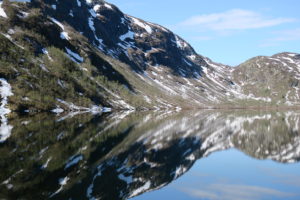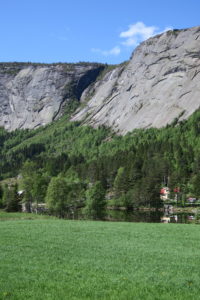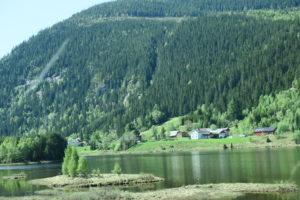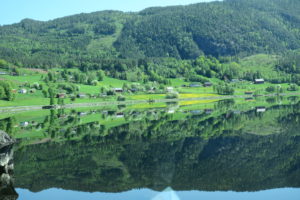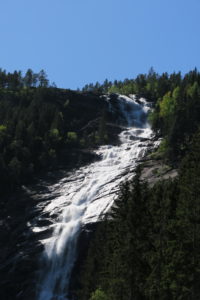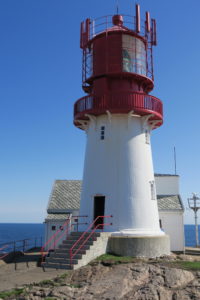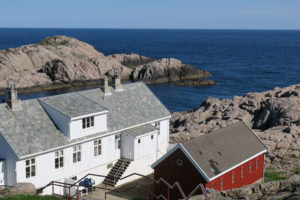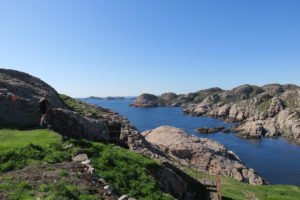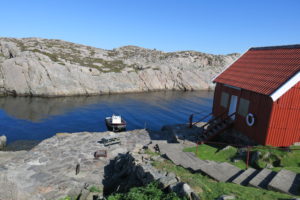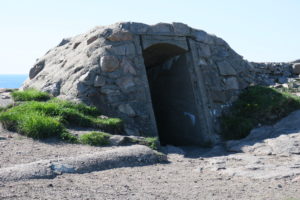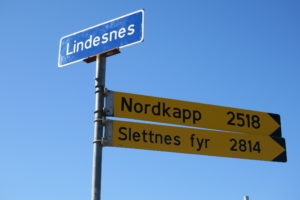Friday, May 25–After some drama about trying to figure out how to pay to exit our parking garage in Trondheim, involving three phone calls with the EuroPark people, we set our course for Røros and headed southeast. It was a pleasant and uneventful drive.
A waterfall we encountered along the way.
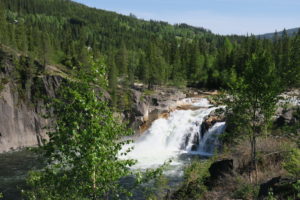
We arrived in Røros in late afternoon. After getting settled in our hotel, we walked up the main street to get the lay of the land.
The town sits on a slope with the church toward the top of the hill.
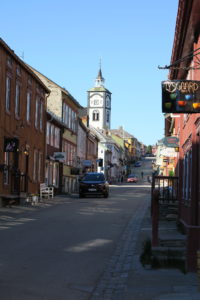
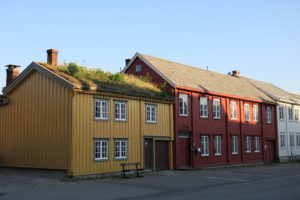
Røros is a UNESCO World Heritage Site. It has 75 listed buildings in a fairly small town. It was an old copper mining town from the 1640’s, and is amazingly intact for a town filled with wood buildings. It sits at 2000 ft. above sea level, so it sees some harsh winter weather. (We were told it had snowed just a few weeks before. No wonder everyone was so excited about the warm weather!)
I think I first became interested in seeing Røros when I saw two paintings of the town in the National Gallery in Oslo when we visited 2 years ago. The paintings showed old, brightly painted wood buildings. One was called “A Street in Røros” (if I recall correctly), and the other was the same scene in winter. I did some research on what and where Røros was and have had a bit of a bee in my bonnet about seeing it ever since.
The young man who checked us out of our hotel in Trondheim had gotten quite excited when he learned we were headed for Røros. He lived there for a time. He told us there is a southern group of Sami people in the area. Had no idea of that. He also said that Røros is considered the best terroir for food in Norway (i.e., a unique and distinctive cuisine of a region). He told us to be sure to taste cheese and dairy products (we had been noticing references to Røros cream and Røros cheese for awhile) and reindeer products.
We went to a local guest house for dinner and ate in their bar. Reindeer steak and reindeer burgers were on the menu, but we opted for a charcuterie plate of reindeer sausage from 30 minutes away (think of a strongly flavored salami) and cured mountain ham from a town about an hour away. We ordered some potatoes from 15 minutes away to go with the meat and had locally brewed beer as well. Now I’d call that eating local.
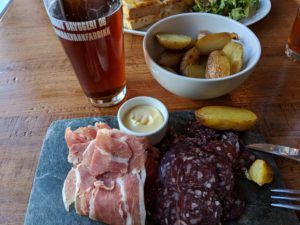
On Saturday, we went up the main street again, only this time there were hundreds of people in the streets and shops. We stopped to look at Røros tweed and a local silversmith’s wares. We wandered through a courtyard and shop filled to the brim with ceramics. The doors and walls were covered in tile, even the door jambs and stair railings.
Then we went back up the hill to visit the church—Bergstadens Ziir.
The man who collected our entrance fee gave us a guide in English and wanted to know if we were from Britain. We explained that we were from the west coast of the United States. As has been typical, he expressed surprise. And, once again, he asked why we were here. He assumed we must have family in the area. This has happened to us so many times now we have lost count. Literally, “Why are you here?” is the question we have fielded over and over.
The church is unusual in that it was built by the mining company and has mining symbols on its steeple and mining references in the church as well. There were special boxes (think theater boxes) where the company directors sat. There were paintings of the directors hanging across the front of the church. Front and center, where in many churches you would see a crucifix, was a rather exalted-looking pulpit. The church has two galleries along each side, where the lesser beings in the company or town hierarchy would sit.
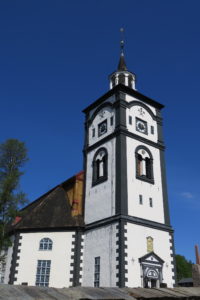
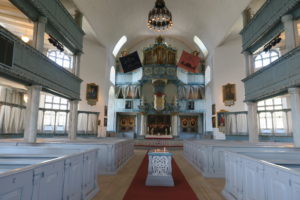
The organ and the royal box.
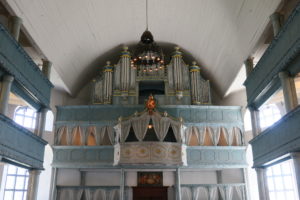
We went further up the hill and then walked to the river and the old copper mine. It was active until 1977. There’s nothing very pretty about mining. Slag heaps and lots of scorched earth. But this is what this town was all about. When you’re walking through the shopping and residential areas with their brightly colored buildings, you don’t have much sense of this ragged area just up the hill.

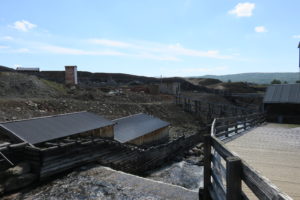
Then you come back down into town, and all seems pretty and busy again.
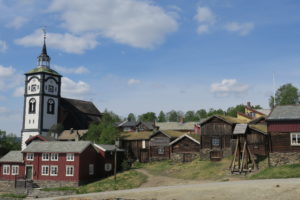

We really enjoyed seeing this unique town. It may have shops and tourists on the weekends (and I understand it’s wildly popular in the snowy wintertime, featuring sleigh rides), but its winding streets and authentic houses give you a taste of a long past time. Just walking amongst all this palpable history is pretty special.
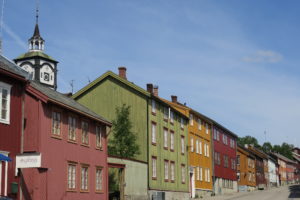
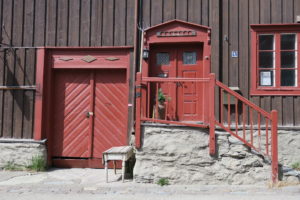
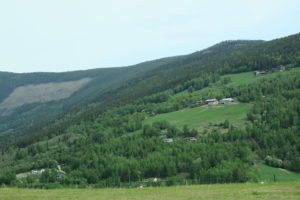
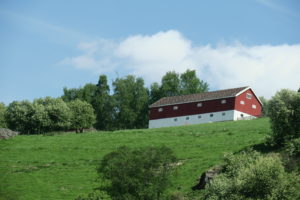
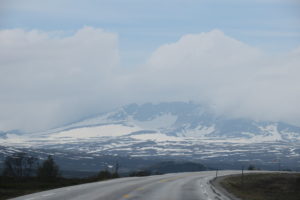

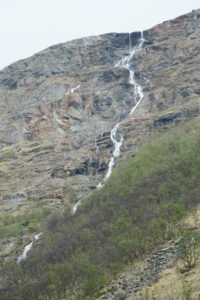
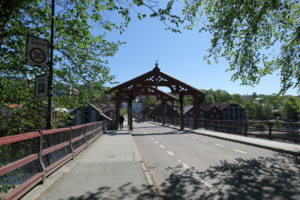
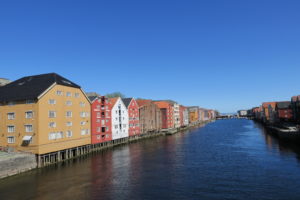
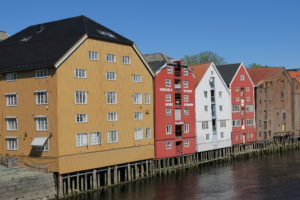
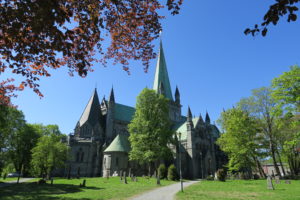

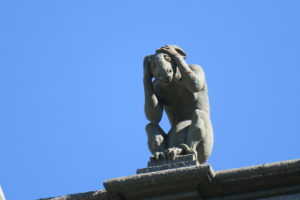
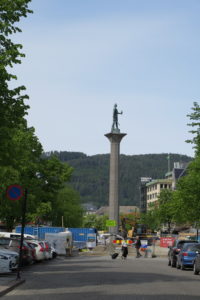
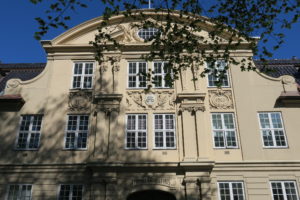
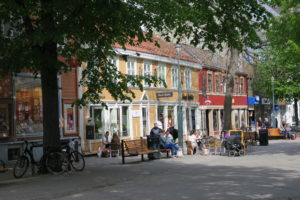
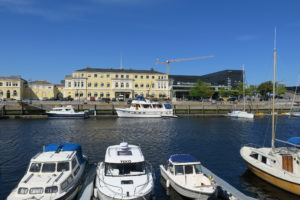

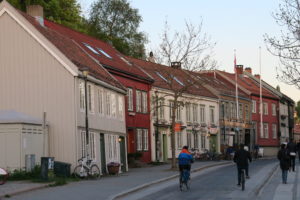

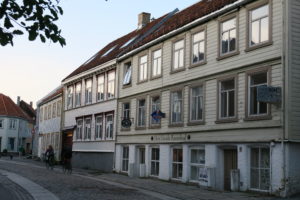



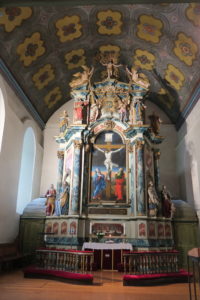
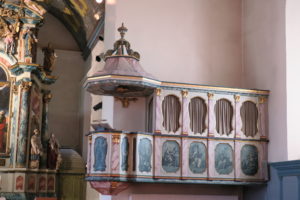

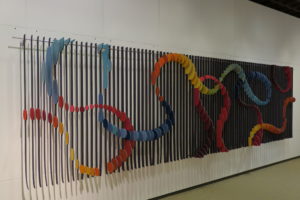
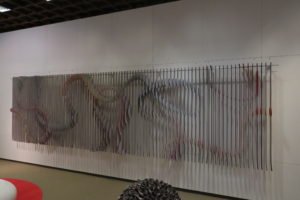
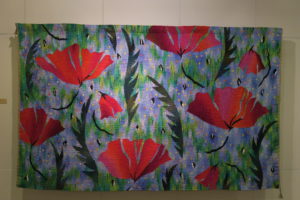



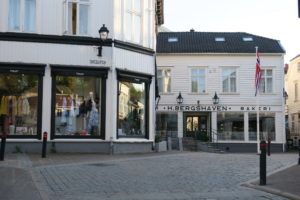
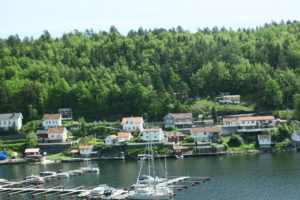

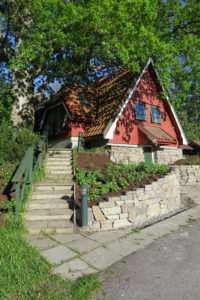
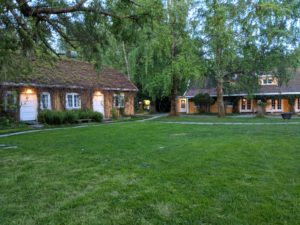
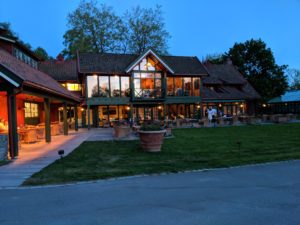
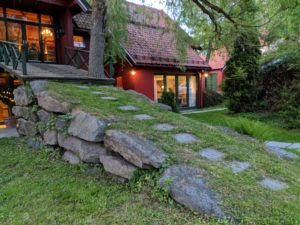
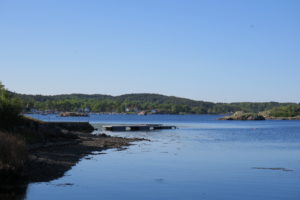

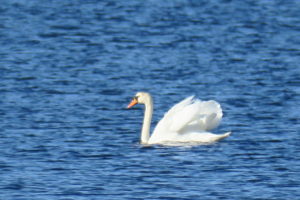
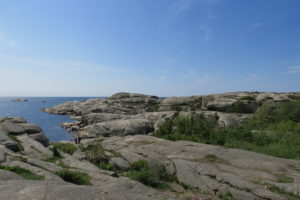
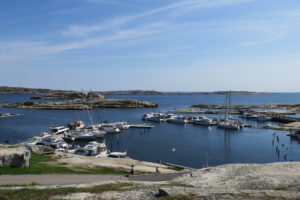

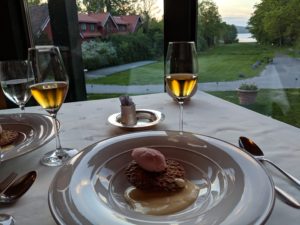
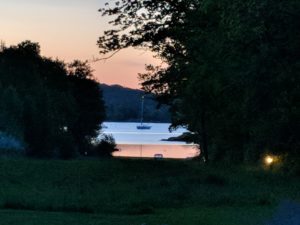
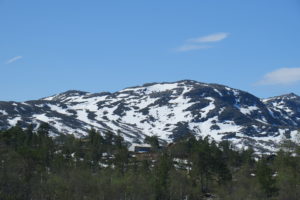 U
U
